Jasmine Large-flowered - a fragrant shrub, densely covered with large snow-white inflorescences. You can grow such a spectacular plant both in the garden and in room conditions. Unpretentious and hardy culture perfectly carries out in almost any terrain, has increased frost resistance and allows you to admire abundant blossom all summer and even the first half of autumn. How to plan a plant yourself? What care to provide culture depending on the conditions of growth? How does jasmine large-flowered breeding?
Content |
Jasmine large-flowered, plant description
- The large genus of evergreen shrubs "Jasmine" refers to the family of oline. A beautiful fragrant plant in many countries of the East, in particular, in Indonesia, in the Philippines and in Pakistan has long been a national symbol that personifies purity and love.
- In natural conditions, Jasmine can be found in the southern regions with a warm subtropical climate (in South Asia, on the Mediterranean, in Africa). In Russia, Jasmine is able to grow both in the open soil and in room conditions.
- In Europe, Jasmine became known in the 11th century. Very often, Jasmine is confused with a similar shrub, called the "Chubuschnik", however, these are completely different plants. Chubuschnik is a representative of the family of hydrangea.
- Currently, about 200 tons of jasmine varieties are known, although only a few, the most "successful", hybrids are used in culture.
- Jasmine large-flowered is a curly shrub with liaans reaching a length of 2 to 10 meters, depending on the cultivation conditions.
- Com contradiously located, the complex leaves of the jasmine are distinguished by the lack of horses and an elongated elliptical form with a pointed vertex. The dimensions of the sheet plate are not more than 2-3 cm.
- The correct jasmine flowers are collected in the inflorescence of an umbrella and painted mainly in white. Flowers are very large and fragrant, located on the tops of the shoots. The flowering of shrubs passes abundantly, begins at the beginning of summer and continues until the autumn itself.
- The life expectancy of the flowering shrub in one place is about 10 years.
Jasmine large-flowered, plant application
- Essential-shaped culture, jasmine large-flowered, used to obtain fragrant essential oil. So, to get 1 g of fragrant ether will need about 1 kg of jasmine flowers.
- Jasmine essential oil is widely used in the perfume industry for the manufacture of spirits, toilet water, massage oil and other flavored cosmetics.
- Since ancient times, jasmine oil was recognized as an effective aphrodisiac and antidepressant, allowing to provide a tonic and soothing effect, reduce the feeling of anxiety and anxiety, strengthen the nervous system.
- At the same time, considering the saturated smell of jasmine, leave the flowers in the room for a long time, especially for the night, it is impossible, since a strong fragrance can cause headache and nausea.
- Jasmine flowers are added to tea or use them as flavored tea drinks.
- Garden jasmine shoots are used for baskets and other braided products.
- Decorative shrub, jasmine large-flowered, often used in landscape design to decorate the garden or forming a living hedge.
- The sweet pleasant aroma of jasmine in the garden attracts bees and other honey insects, so the plant is recognized as a good honey.
Jasmine large-flowered, planting features
Most of the types of jasmine, including jasmine large-flowered, easily carry the landing and quickly adapt to new conditions.
Looking out jasmine large-flowered in the open ground and in the flower pot. Consider the features of planting culture in different variations.
Jasmine Largender, landing conditions in open ground
- Place for landing. Jasmine is not very demanding to light, so it is possible to plant it, both in open areas and in a half. A plot is also suitable for which the shadow falls from any buildings or fence. Very often, the decorative shrub is planted at the corner of the house or in the area of \u200b\u200bentrance to the nice or garden plot. In such a place, the blooming jasmine looks particularly attractive and perfectly decorates the garden. At the same time, it is worth noting that the shadow flowering shrub will be weak and not long, therefore, you should still pick up a sunny place, but a windless place.
- Soil for planting. As for the soil, the jasmine shrub does not require specially prepared soil. The plant grows almost everywhere. The only exception is stagnant wetlands or places with close grounding of groundwater. The presence of constant moisture can provoke rotting the root system of perennial. Naturally, in conditions of fertile, loose and air-permeable soil, the plant will develop best. The most optimal option for jasmine is a mixture of deciduous, clay and turf and sand taken in equal proportions, with a pH level of about 6.0.
- Time for landing. Jasmine large-flowered in the fall, about a month before the onset of frosts, or early spring, when the threat of return freezers passes. Most experienced gardeners prefer the Spring Landing Terms, as more stable and providing the best rooting. Landing, as a rule, spend in the evening, in cloudy weather. If a jasmine seedling with a closed root system is preparing to landing, time for planting such a plant is not limited to the spring or autumn period. Such a seedling can be planted at any warm season.
Jasmine large-flowered, agricultural landing in open ground
- For planting a jasmine of large-flowered, prepare a landing pit, width and depth of no more than half a meter.
- Before boarding, the roots of a seedling should be carefully examined (subject to plant landing with an open root system) for damage or disease. In case of detection of those - rejected roots cut off.
- If planting plants is carried out in lowlands (or in the floodplain of the river), where water can often be searched without a drainage layer. For drainage on the bottom of the landing pits, broken bricks, gravel or crushed stone with coarse-grained sand. The thickness of the drainage layer should be about 15-20 cm.
- On the bottom of the landing pits, any complex fertilizer is poured (for example, nitro-phosphate, containing phosphates and ammonium nitrate), fall asleep from above, filmed from above the soil layer, forming a low holmik. As a nutritional fertilizer, it is also possible to use a mixture of humus with wood ash (on 1 bucket of organics 1 kg of ash).
- A seedlove of jasmine is exhibited on the earthen hollyk, they spread its roots and fall asleep with the soil, periodically sealing it, so that the emptiness is not formed.
- During the landing, it is important to draw attention to the location of the root cervix of the young plant, it should be underground for about 2-3 cm. Do not be too deeply shirling the neck of a seedling, otherwise it can be subjected to rotting.
- After planting a seedling, the land around the trunk is tamped, after which the plant is abundantly watered with water. In order to avoid rapid evaporation of moisture and drying the soil, the priority circle is better to immediately meditate with a suitable material. For this, wood sawdust, peat, compost, chew or ordinary dry grass from the garden are often used.
- Given the long lianas of the shrub of jasmine, many gardeners already establish a solid support on which a long-term culture will be branching. It is very impressive and beautifully arcuate support, resulting in a blooming arch with a fragrant aroma.
- In the case when several large-flowered jasmine seedlings are planted at once, designed to become a flowering alive hedge, the distance between the plants varies from 0, 5 m to 1-1.5 m, depending on the designer plan and the desired hedge density.
Jasmine large-flowered, planting features at home
- Landing a room jasmine is usually carried out in the spring.
- For planting plants, deep caspo or ordinary stable floral pots of small sizes are used.
- Jasmine's young seedlings will have to replant every year, as the root system is growing. A new pot for the plant should not be too spacious, it is enough to use containers of only 1-2 cm more than the previous container.
- At the bottom of the pot, the drainage layer of fine clamps or rubble is necessarily placed.
- The best way to transplant is a transshipment of plants to injure the roots of jasmine as little as possible.
- The soil mixture for perennials is prepared from sheet and turf, mixed with sand and small number of peat.
- The ground when landing is tightly tamped around the plant, after which the flower is watered.
- After planting, as well as after a transplantation, the flower pot is left in a half-day for 2 weeks for better adaptation of the plant.
- After 5 years of age, the jasmine bush is transplanted less often every 2-3 years. At the same time, an adult plant is allowed to transplant in the same pot as it was, but with the obligatory update of the soil substrate. During the transplant, the roots purge from the "old" soil and cut a little.
Jasmine Largender, Care Rules in Open Ground
In order for the spectacular blooming shrub to bear abundant and long-lasting blossom, it is important to provide a long-term culture. Jasmine large-flowered is considered an unpretentious plant requiring regular irrigation, loosening, feeding and annual trimming.
Consider in detail key agrotechnical measures used in the cultivation of this plant.
Watering, loosening and mulching of large-flowered jasmine
- Jasmine is considered a fairly moisture culture and in the period of prolonged lack of moisture leaves of the plant lose the tour and slightly faded. Abundant watering or natural precipitates are able to quickly correct the situation and restore the natural turgorn of the green mass of the shrub.
- At the same time, Jasmine is able to easily transfer short-term periods of drought either, on the contrary, moisture stagnation. The main condition for the favorable development of perennials so that such "negative" moments can as little as possible.
- The average rules of scrubbing depend on the climatic conditions and the presence of natural precipitation. The main parameter by which you can define a sufficient level of moisture for jasmine is a slightly moistened surface layer of soil around the shrub.
- For irrigation, it is best to use a soft, dilated water. Given the fact that Jasmine negatively responds to the content in the soil of lime, periodically (1 time per month) the plant is watered with acidic water.
- Watering the plant is better less often, at the same time, abundantly, spending about 30 liters of water under one bush. In the fall, watering plants reduce.
- Jasmine loves increased air humidity, so you can apply sprinkling shrub. At the same time, the procedure must be carried out when the plant does not bloom, it is best in the spring, since the inflorescence of the jasmine should not get wet.
- After irrigations, in order to avoid sealing of the soil and formation of the crust, the land is loose. Swimming is carried out to a depth of about 6-8 cm.
- The removal of weary herb is a prerequisite for the favorable development of the shrub. It is especially important to spill weeds at the growth stage of a young rapid seedling of jasmine.
- Good results gives mulching of the rolling circle peat, cheese or dry grass.
Making fertilizers and feeding jasmine large-flowered
- Like any other plant, Jasmine large-flowered favorably responds to regular feeding. The presence of full nutrient elements in the soil allow perennials lush and abundantly blooming throughout almost the growing season.
- The first organic fertilizers are made in spring, prior to the start of the active growth of the shrub. Most often, the infusion of a cowboy or any other navitage (diluted in water 1:10).
- 2-3 years after landing, balanced mineral complexes (sulfate potassium and superphosphate) are added as fertilizers.
- After flowering to increase the growth of shoots and the laying of flower kidney for the next year, a little contribute (100-200 g per 1m 2) Wood ash. This universal fertilizer contains a group of the most valuable nutrient elements for plants: potassium, phosphorus, calcium, magnesium, sodium, etc.
- Fertilizers are usually correlated with watering so as not to "burn" the roots of the plant.
Pruning jasmine large-flowered
- To give long jasmine lianams a neat and attractive form, the plant needs an annual trimming. The trimming is carried out in spring, slightly shortening the strongest and tall branches. It is reasonably moderately (no more than 1 \\ 3) trim shoots, since too circumcised shrub will be able to bloom only in a year.
- Jasmine flowers appear on the runs of the second year, which means that sanitary trim should be carried out only after flowering. Sanitary trim involves removing patients, weak, damaged or shadowing (growing inside the shrub) of shoots. Simultaneously cut off and all the sworded inflorescences.
- Once every 4-5 years it is necessary to carry out a rejuvenating trimming, at which all old shoots are completely cut off. Such trimming is carried out in spring. A similar "cardinal" haircut rejuvenates a shrub, promotes the growth of young shoots and a rich blossom of jasmine. If a too old bush is trimmed with thick branches, cuts are treated with garden water.
- Jasmine's young seedlings, it is enough to discharge the top of the shoots to improve bushes and increase the number of inflorescences.
Fighting diseases and pests of jasmine large-flowered
- The Jasmine plant is little subject to the attack of pests or infection with diseases. Meanwhile, occasionally, it is possible to appear such pests, like: a wave, sheet weevil, torment Cherver, a web tick and a flap.
- Shelon leaf and its larvae damage the leaves of the plant, feeding them with juice. The wave parasitates on the top shoots, relaxing their growth and deforming the leaves. The vital activity of the web tick is noticeable by white threads and faded leaves of perennial.
- If the specified insects were seen on the garden jasmine, first, you can try to treat a bush with a solution of economic soap, and if this method is not effective - resort to chemical insecticides (for example, "actor").
- Experienced gardeners often use proven folk remedies that allow you to exterminate insects without the use of chemicals. In the fight against the invasion of parasites, it is effective, for example, an infusion of potato tops (2 kg of greenery on 10 liters of water insist night, after which they are filled and used for spraying). The TLL and the web tick do not tolerate the means like a hammers decoction (2 kg of grass on a 3 liter of water, boil 40 minutes, add to 10 liters of water and insist for 5-6 hours). This infusion is treated with a shrub several times, with an interval of 5 days. To get rid of caterpillars and weevils, you can cook mustard infusion. For this, 600 g of chopped greens of mustard pour 10 liters of water and insist the grass of 2 days.
- With excessive watering and in the period of tightening rains, the appearance of rot, which gradually destroys the base of the plant barrel and covers the leaves with characteristic mold spots. To save the shrub will have to resort to the processing of a fungicidal preparation, simultaneously stabilizing the policies.
Preparation for winter large-flowered jasmine
- Jasmine large-flowered, grown in the garden, does not require additional shelter for the winter period. This concerns even cold regions of the middle strip of Russia.
- Even the shooting in winter shoots practically do not affect the development of shrub. Such shoots are cut off, after which the plant is rapidly restored and blooms at normal time.
- The only exception is young faster seedlings, which are wrapped up for winter by any observer material, and the rolling circle is mulched.
Jasmine Large-flowered, Features of care at home
The rules for the care of jasmine large-flowered at home are in many ways similar to the garden representative of the species, although they have some features.
- Light-loving jasmine prefers good lighting, but without direct sunlight. Optimal location of the room pot - Eastern and Western windows.
- Temperature regime for perennials, in the warm season, nothing is different from other indoor flowers. In winter, Jasmine is better transferred to a cooler room, with a temperature of about 10-15 0C. During this period, the plant is at rest and is practically not growing. It is allowed to 20 temperatures 0C, but under the condition of high humidity for flower. It is not allowed to place pots with jasmine near heating devices.
- As for the irrigation, it is important to regularly moisten the soil in a pot so that the soil has always been slightly humid: without stagnation and drying. Water should be soft, estimated. In winter, the irrigation rate is reduced. To avoid grinding the soil, the flower is poured with acidic water once a month.
- Jasmine prefers enhanced air humidity and responds to a regular spraying of the crown of the pulverizer. Raintenance is carried out in the morning or in the evening to avoid burns under the influence of active solar ultraviolet rays. When spraying, it is important that the water does not get on the jasmine flowers. Another way to achieve high humidity is to place a pot with a flower in a pallet with a moisturized clay (pebbles).
- The active development of jasmine is accompanied by regular fake plants. The recommended dose - once every 7-10 days during the actively vegetation of the plant (from May to August). As fertilizers, any complexes intended for flowering indoor plants with high potassium content are used.
- Room jasmine is covered in spring, stimulating his bloom and forming a neat crown. The young seedlings of jasmine pinch the top of the shoots to improve bushes and increase the number of inflorescences.
- Given the strong aromatic properties of jasmine during flowering period, it is important to take precautions and at night a plant to carry out the room. Otherwise, the appearance of strong headaches, up to the fainting states.
Problems for growing jasmine large-flowered
- Leaves twist, dry and fall. The reasons can be: dry warm air, high ambient temperature, drafts, lack of illumination, pest appearance or insufficient watering (sprinkling).
- The tips of the leaves are yellow and dried. The reasons can be: lack of moisture in the soil and air.
- Dry shoots. The reasons can be: grinding ground, watering the plants with rigid water, low air humidity or incorrectly selected soil substrate.
- Brown spots appeared on the leaves. The reason can be: straight sunlight, causing leaves burns.
- The plant does not bloom. The reasons can be: insufficient lighting, lack of a winter period of rest, irregular shrub trimming, tillage, no feeding, too dry air in the room or insect pest attack.
The reproduction of the jasmine large-flowered
Jasmine Large-flowered can multiply in several ways: grooves, cuttings, seeds, the division of the bush.
Reproduction of jasmine large-flowered cuttings
- Shining is the most common method of reproduction of jasmine.
- For shilling, in the spring, we prepare glued tolerant shoots with the presence of at least 3 intercosals on them.
- You can also harvest the cuttings in the summer, but then the green young shoots are cut off. From the prepared cuttings, the bottom leaves are cut and placed shoots for several hours into the solution of the stimulator of the root formation.
- The cuttings are planted into a light soil substrate consisting of sand with peat or leaf ground with sand, in equal parts.
- For successful rooting, the air temperature must be about 20 0C. The cuttings in mini-greenhouses are well rooted, for this, landed shoots are covered with glass jars or cut plastic bottles. In such conditions, cuttings provide regular ventilation and moisturizing.
- About a month later, the rooted cuttings are planted in separate containers. As roots develop, seedlings are transplanted into larger containers.
Reproduction of jasmine large-flowered brass
- To multiply the shrub of jasmine tanks, the lower major jasmine shoots are chosen in the fall, which tilted to the ground into the prepared groove and fall asleep with a sandy-peat mixture.
- It should be pre-made a suction of a cortex in a place where the roots will be formed.
- In order for the branches not risen, they are fixed to the ground using a metal bracket.
- If attacked shoots have their own roots, on the next fall, they are separated from the maternal bush and disembark separately.
Gasmine large-flowered jasmine breeding
- The division of the jasmine bush involves division into parts of its root system.
- To do this, it is not necessary to dig all the plant, you can try to just dig part of the bush with roots and transplant to a new place.
- This method of reproduction is acceptable only for adults, but not too old, jasmine bushes. The procedure is carried out, as a rule, in the fall.
Gasmine large-flowered seeds
- The seed method of breeding jasmine is considered the longest and time consuming.
- For the extension of seeds and obtaining full-fledged seedlings, you will need at least 7-8 years.
- Often, the collected overwhelmed seeds are seeded for the winter to open ground, additionally, covering the bed with spruce branches. In case of successful stratification and wintering, in the spring, you can see the first shoots.
Thus, growing a jasmine large-flowered in the room or in the garden, it is possible to enjoy the beauty of the blooming bush for a long time and inhaling a pleasant aroma of many years of culture.

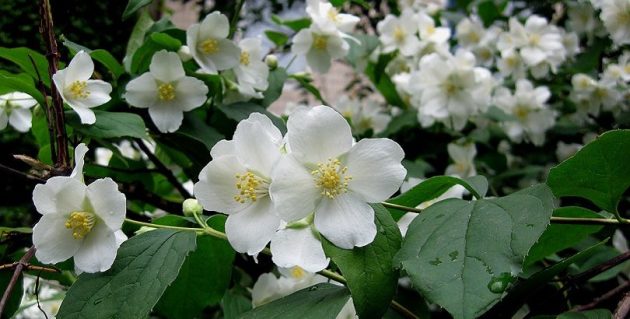
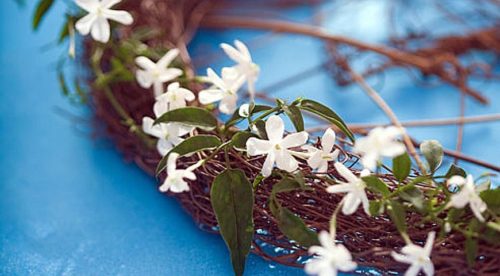
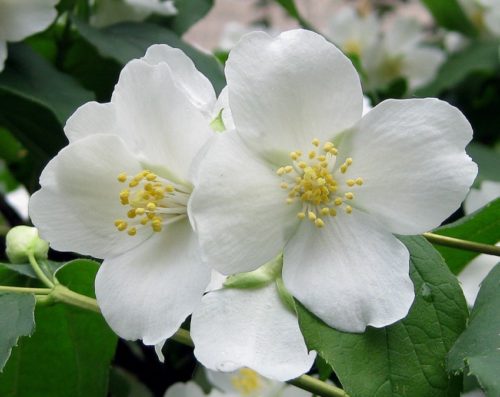
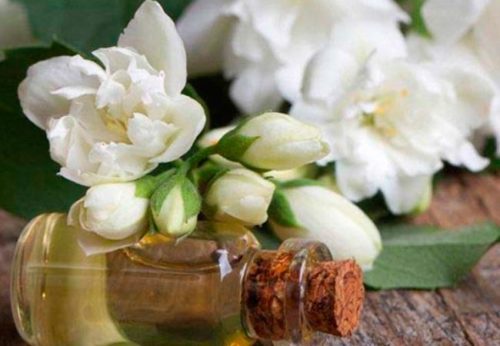
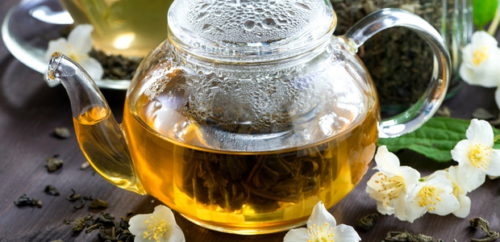
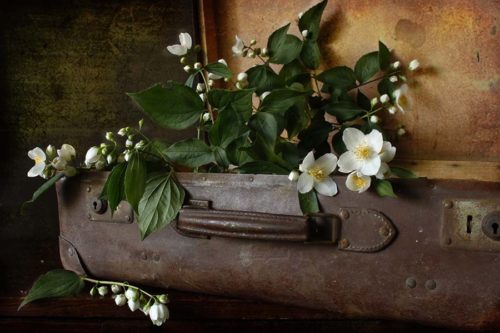
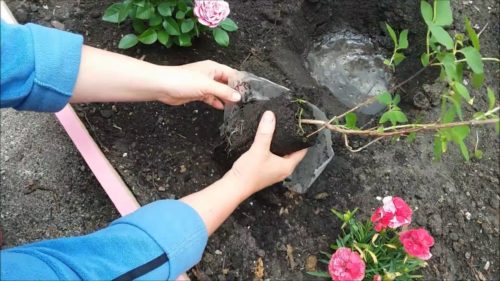
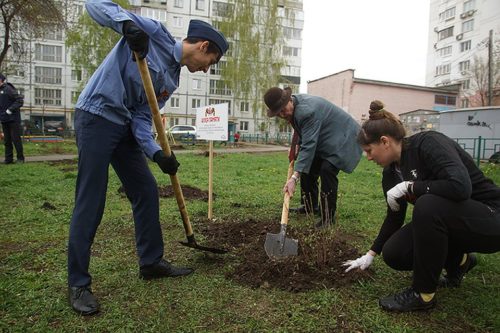
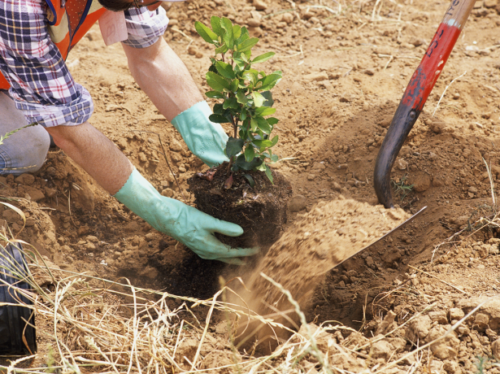
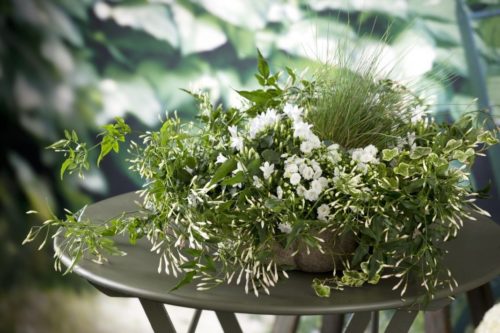

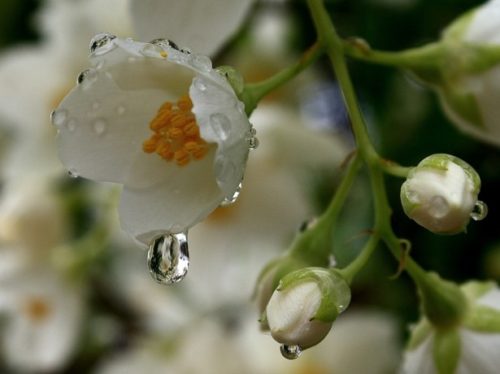
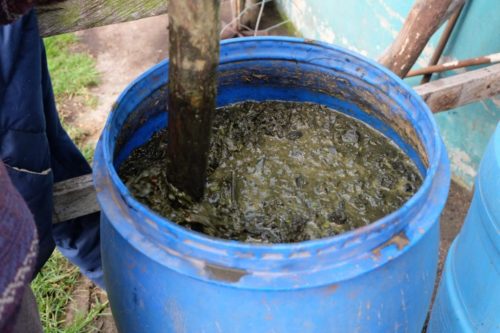

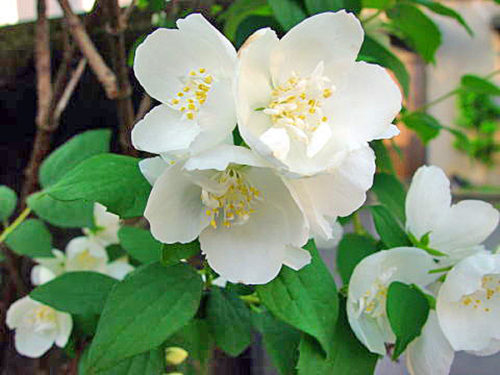
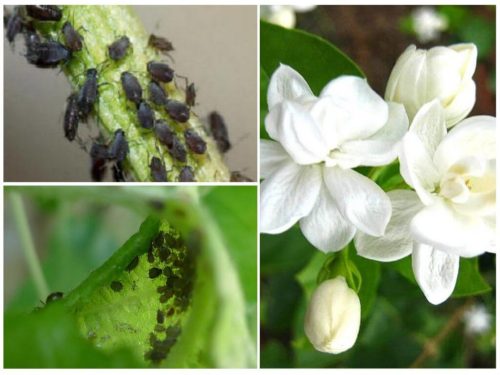
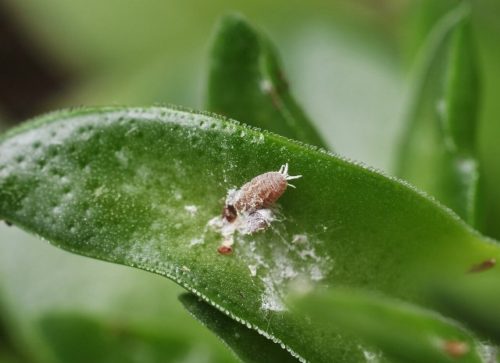

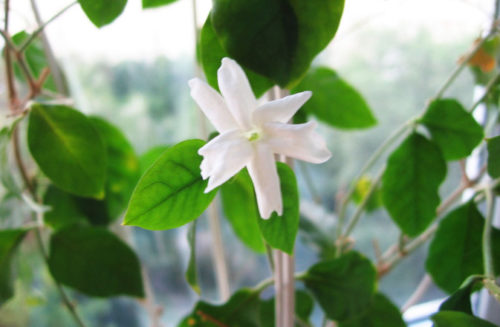



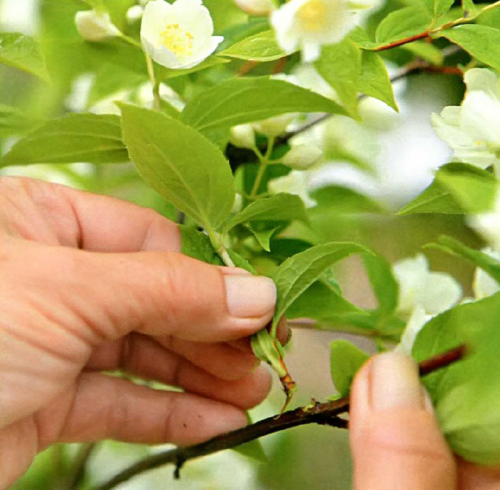

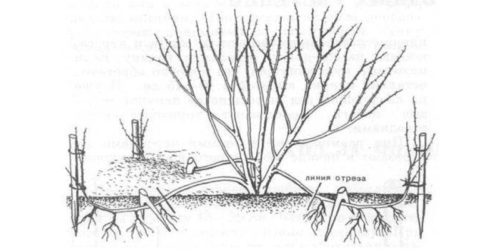
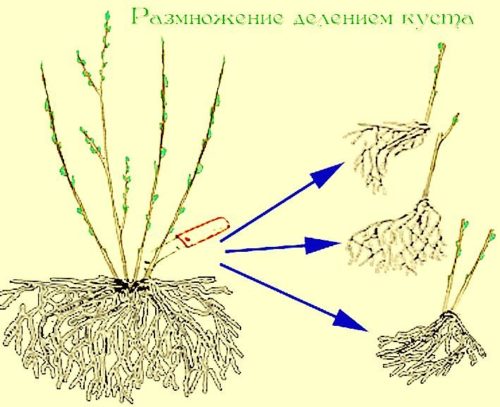














 Start a discussion ...
Start a discussion ...